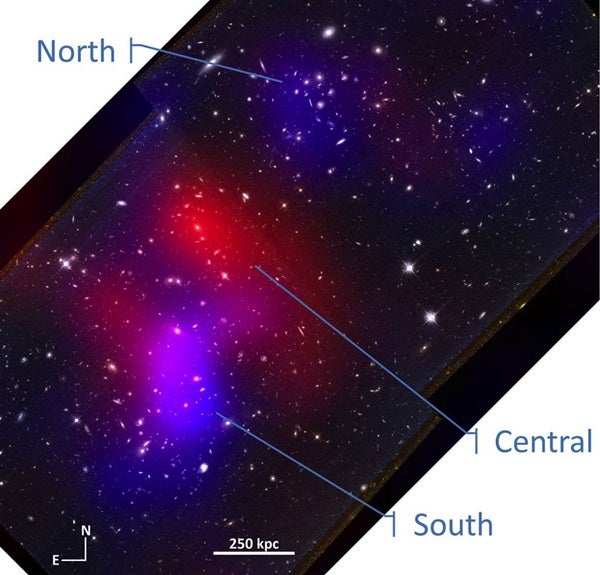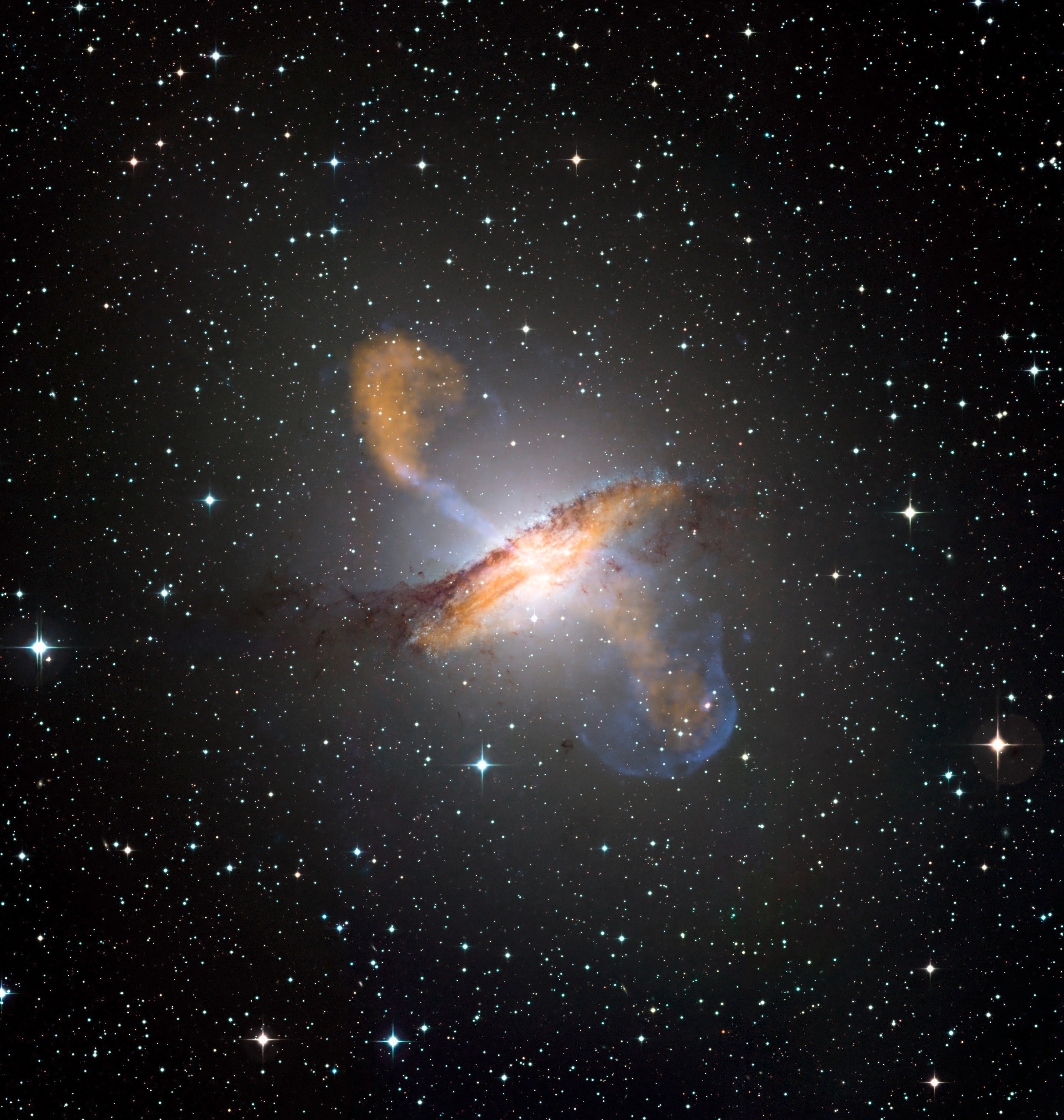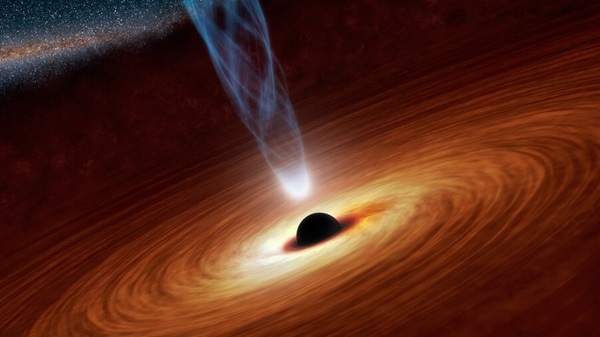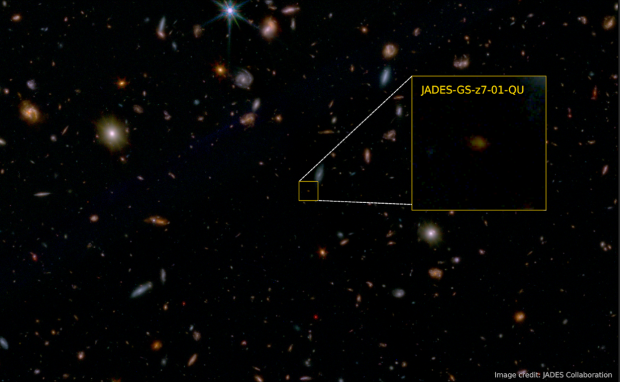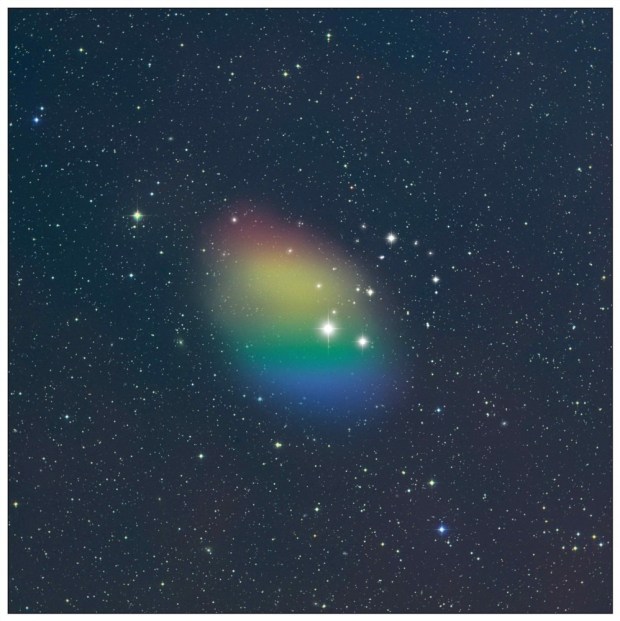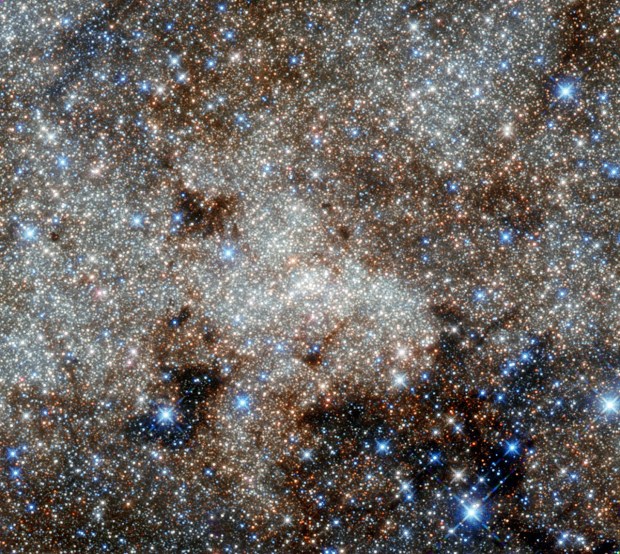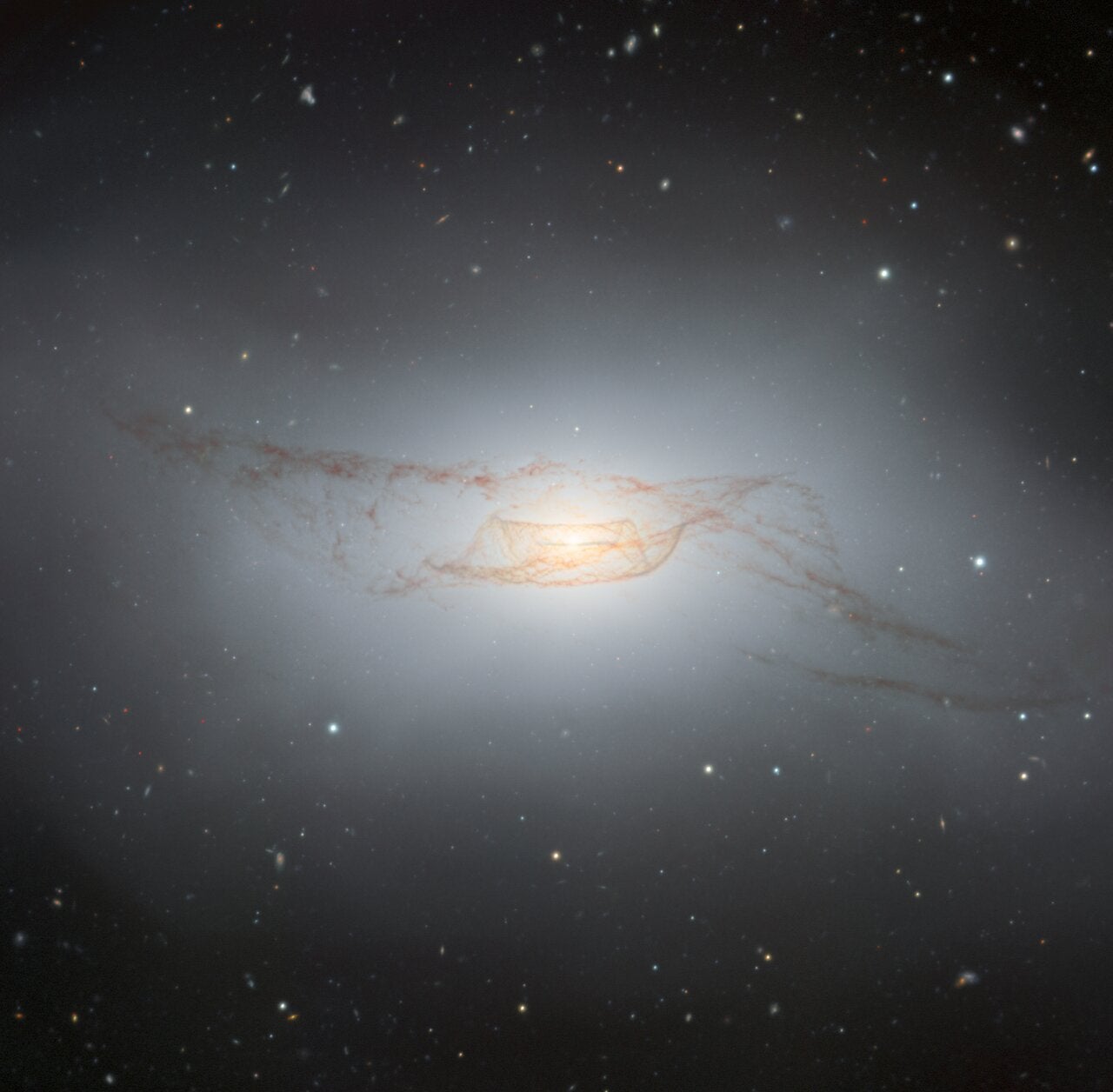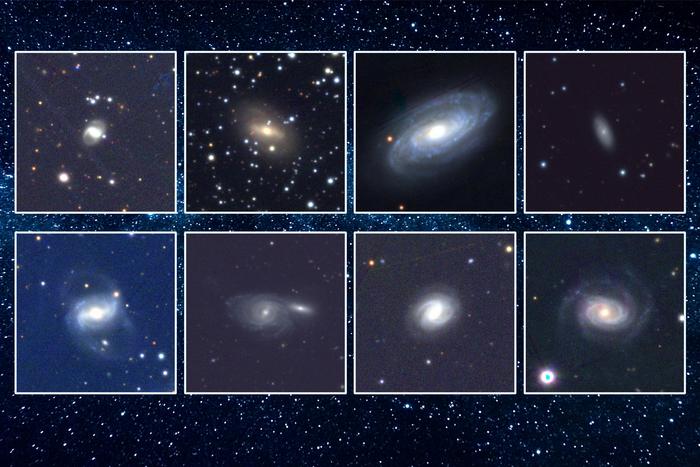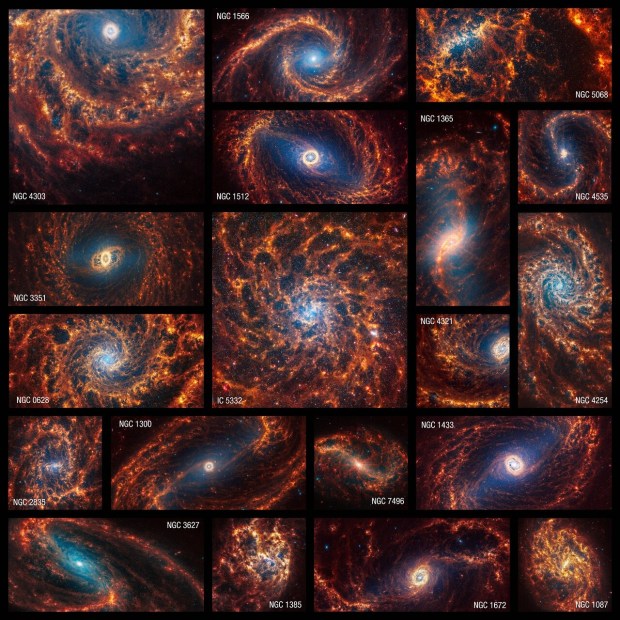“A galaxy cluster is like a little universe because it has the same matter composition as the whole universe,” Dawson said. “By studying this little universe, we can learn more about our own.”
This “little universe” is formally called DLSCL J0916.2+2951 and consists of two clusters of hundreds of galaxies each. It is in the process of merging into one. It is nicknamed Perry’s cluster after team member Perry Gee from the University of California, Davis, who discovered it, or the “Musket Ball” because it is similar to another merging cluster called the Bullet Cluster, but relatively further along in its development.
Perry’s cluster comprises about 86 percent dark matter, 12 percent superheated gas, and 2 percent actual stars. Those proportions are similar to the distribution of mass in the universe as a whole, Dawson said.
Dark matter is thought to interact very little, if at all, with “regular” matter and does not emit light. But it does exert a gravitational pull on light passing through or near it, distorting the image of distant objects — like looking through the bottom of a glass bottle.
Dawson and colleagues mapped Perry’s cluster by using the Hubble Space Telescope, the Subaru 8-meter telescope in Hawaii, the Kitt Peak National Observatory 4-meter Mayall telescope, and the Keck 10-meter telescopes in Hawaii to map the visible galaxies, and the Chandra X-ray Observatory for the super-hot gas.
And, with the Hubble, Subaru, and Mayall telescopes, the researchers mapped the dark matter by observing distortions in light passing through the cluster from more distant objects — a method called weak gravitational lensing.
The map revealed that the two galaxy clusters within Perry’s cluster had passed through each other — the spaces between galaxies within the cluster are so vast that an actual collision is unlikely — and that most of the dark matter also had passed through without collision.
Not so with the gas clouds: They had collided and become stuck between the clusters, making a huge cloud of gas a thousand times hotter than the surface of the Sun.
“Because these mergers separate the various matter components of the cluster, they provide astronomers with dissection of the cosmos that would otherwise be impossible,” Dawson said.
By comparing and contrasting the behavior of the dark matter to that of the galaxies and gas in the merging cluster, physicists can rule out some theories about dark matter’s properties.
The energy of these merging clusters is incomprehensibly large, Dawson said — a million-million times bigger than a supernova. Only a handful has been studied to date.
The “Musket Ball” is the furthest progressed of these merging clusters yet seen, Dawson said. Every great advance in our understanding of the physical world is the direct result of understanding how things change with time, so the hope is that by observing clusters at different stages of merging, astronomers can gain insight into the physics involved, he said.

